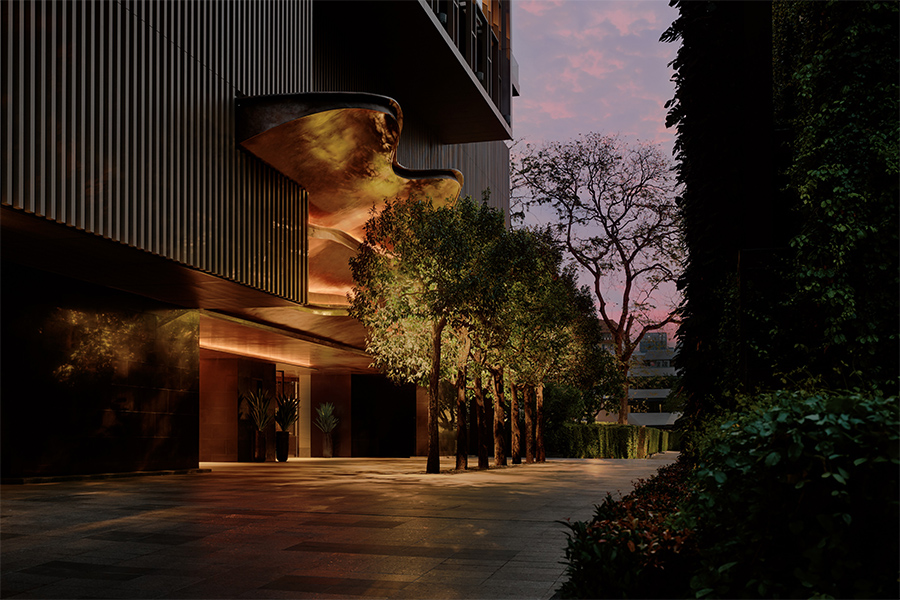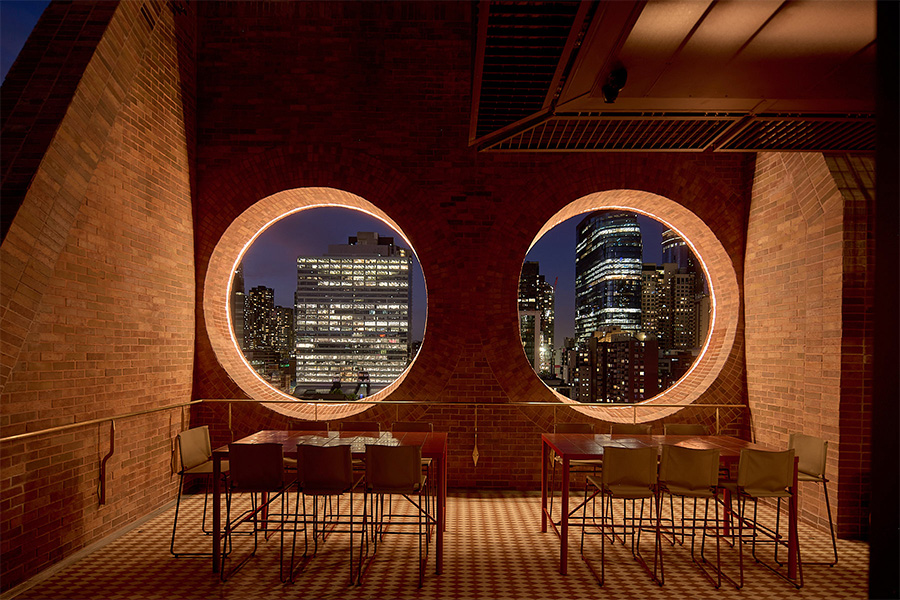After Soviet troops left Hungary in the early 1990s, Budapest reemerged with new symbols of pride⠯⠯including the Kempinski Hotel Corvinus. “The hotel was built at a time that was very important for Hungary and is quite imposing,” says lead designer Maria Vafiadis, principal of London-based MKV Design. “Budapest was a fount of inspiration for many of the design details.” More than two decades after the original build, Vafiadis stepped in to bring the hotel up to modern expectations.
.jpg)
The Living Room
During the 19th century, the city developed a traditional coffeehouse culture for like minds to discuss politics, literature, and music. The hotel’s living room recognizes this with familiar features⠯⠯including a patisserie counter with a backlit colored glass panel. “Our design embraces this tradition by creating a place for people to unwind and enjoy a moment’s respite from their daily routine,” adds Vafiadis.
.jpg)
Blue Fox the Bar
For the relaxing scene in Blue Fox the Bar, mirrored nooks and glass columns reflect dark furnishings and a cobalt blue bar. “We aimed to create a discreet, intimate space for guests to quietly relax in one of its cozy alcoves,” comments Vafiadis. Velvet upholstery complements the alcoves’ walnut timber floors and tables.

ÉS Bisztró
This timber backdrop carries over into ÉS Bisztró, which is paired with modern tessellated tiles and hanging metal ceiling lights. Set in the style of a German tavern, the restaurant “is both farmhouse kitchen and stylish urban restaurant, traditional and modern, a breakfast room and a party venue, fun-loving and grownup,” says Vafiadis. Thanks to a beveled mirror screen, the restaurant divides into three areas to accommodate the changing all-day dining scene.

ÉS Bisztró
Since the Promenade’s circular space also hosts a morning-to-night crowd, Vafiadis outfitted it with walnut paneling, tan leather sofas, bronze tables, and alcoves clad in honey-toned Alcantara suede. “It has an entirely different atmosphere in the morning⠯⠯when it has the quality of a conservatory bathed in sunlight from the atrium’s glass roof⠯⠯than it does in the evening, when the mood changes and the design is shown to its dramatic effect,” she explains.

The Promenade
The drama of the glazed roof continues in the lobby. “The main entrance cried for a new concept,” says Vafiadis. “We had a vision of clean lines and of adapting the existing architecture [to make] it warmer and more welcoming⠯⠯after all, it is a big building.” A 30-foot circular glazed roof towers over marble floors, while glass fiber acrylic panels cover the wall. Referencing the city’s musical heritage, an alternating keyboard pattern makes up the lobby’s marble pathway, and a staircase from the grand floor recalls Budapest’s Art Nouveau style with a sweeping structure and a perforated metal balustrade.
.jpg)
Lobby
“We wanted to give [the lobby] a ‘wow’ factor, something that guests would remember but at the same time make it warm and inviting,” says Vafiadis. “We set out to celebrate [the hotel’s] form while creating spaces that respond to the varying desires of guests from day to night, and whether traveling for business or leisure⠯⠯to leave a unique and lasting impression.”



